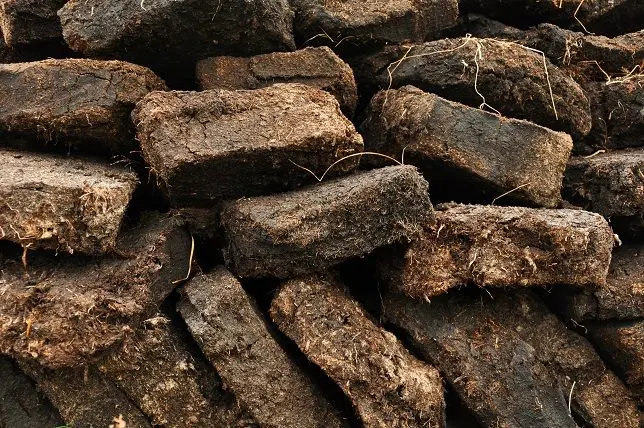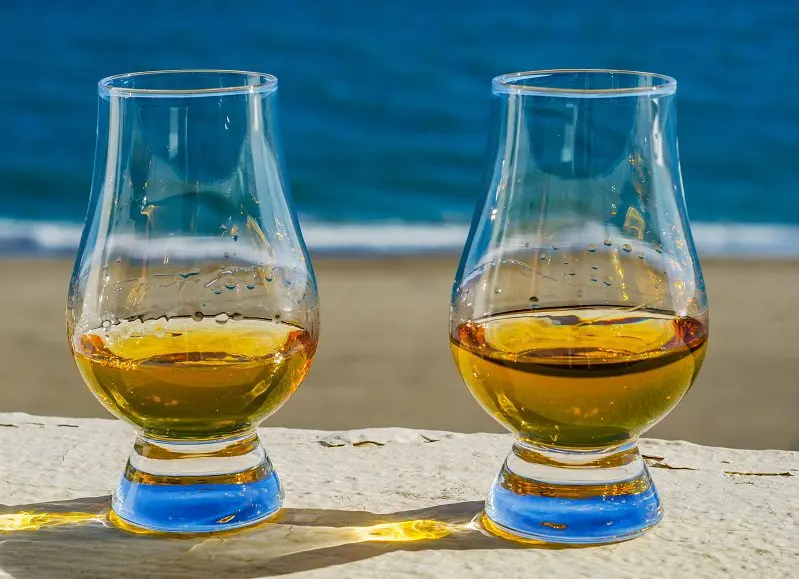Contents
Single malt scotch is usually categorized as a smoky whiskey, but blended brands are also found, not only in Scotland, but also in Japan, Ireland, and even in the northwest of the United States.
History. The first peat whiskey appeared in Scotland – the fact is that the soil here is replete with peat, and the locals have long used this fuel to heat their homes and cook. The process of making whiskey was no exception, and both the malt at the drying stage and the mash in alambic when heated were subjected to “smoky treatment”. The peat flavor has become a hallmark of Scotch Scotch, so when foreign producers want to replicate the original style, they import peat and water (which runs through the peaty soil layers) from Scotland.
What was originally a necessity has now become a deliberate “highlight”, a separate direction. Malt has long been possible to dry in modern kilns without the use of peat pits. There is also an intermediate option – drying on coal and coke. This whiskey is smoky, but not peaty.

Features of production technology
First, the malted barley is dried to stop the germination process, then it is smoked over a peat fire to saturate the future distillate with smoky flavors. The longer this stage lasts, the higher the “smokiness” of the drink will be – and this is the official parameter, measured in PPM (Phenol Parts per Million or the number of phenol particles per million particles of malt).
If the PPM is less than 5, this value is ignored and the whiskey is considered normal. To date, the highest recorded “smoky” is 258 ppm, and the most smoky whiskey is the brand Octomore 06.3/258 ppm Islay Barley 2009 from Bruichladdich.

On exposure, the amount of phenols decreases and the “smokyness” decreases. Ppm is measured immediately after drying the malt, and if in the grain before mashing this parameter is 40, then in an aged thirty-year-old whiskey made from the same malt, it will drop to 6.
The composition and characteristics of peat vary by region. Peat can contain the remains of plants, trees, algae, and other organic elements, and each of them endows the smoke with its own unique bouquet, which is transferred to the malt. The higher the peat lies, the more smoke it gives, respectively, the richer the “impregnation” will turn out.
Smoky or peaty
Above, we used these terms as synonyms, as is customary in the Russian tradition, but some foreign authors distinguish between these concepts.
Peat is a fossil fuel from organic remains, it burns excellently and is therefore often used to dry malt. Only this fuel saturates the whiskey with a characteristic peaty aroma and taste, while just smoky notes appear when dried on an open fire using any fuel (wood, coal, coke) or even when aged in toasted oak barrels.
Peat gives earthy nuances with notes of iodine, tones of dewy grass. Smokyness derived from other sources is manifested by dry notes. However, in most cases, when people talk about smoky whiskey, they mean exactly the peaty style.
Famous brands of peat whiskey
There is a wide range of smoky whiskeys on the market, ranging from light-bodied and refreshing to heavy and full-bodied. Despite the fact that the issue of “peaty” whiskey is an eternal battlefield for apologists and opponents of this style, there is an opinion that in fact everyone can find a smoky brand to their liking, and if this has not already happened, the taster needs to look further.
Famous brands of peaty and smoky whiskeys:
- Octomore Masterclass 8.3 from Bruichladdich. The most intense “smoke”.
- Peat Week by The Balvenie. Light nuances of smoke.
- Cairdeas by Laphroaig. Passes a five-year exposure in oak barrels from bourbon, acquires the tone of a fire, grass, creamy toffee.
- No Name by Compass Box. The smoke flavor is distinct but not overpowering.
- Cherry Smoked Barley by Woodford Reserve. Smoky bourbon with hints of cherry wood.
- Son of a Peat. Exclusive edition, a blend of eight Islay whiskeys. It has a complex bouquet with soft nuances of smoke.
- An Oa by Ardbeg. Single malt whiskey with an intense peaty aroma.
- Lagavulin 12. 12 year old sample, fresh, spicy, fruity.
- Port Ellen 37. A very rare and expensive edition, since the distillery has already closed.
- Paul John. Indian smoky whiskey.

As already mentioned, not all scotch is smoky, and not all smoky whiskey is scotch. But the most characteristic representatives of the style are made on the Scottish island of Islay, and well-known manufacturers include Highland Park, Compass Box Peat Monster, Ardbeg, Laphroaug, Caol Ila, Bowmore. Johnnie Walker Black, Monkey Shoulder, Bunnahabhain sound a little less pronounced. The representative of the Japanese direction is Hakushu Distilleryz, Ireland is known for the Connemara and Redbreast brands.
How to drink peaty whiskey
It is believed that every sip of smoky whiskey is saturated with the warmth of a peat fire. For tasting, traditional whiskey glasses are suitable – nousing (perfectly reveals the aroma), a tulip and even a cognac snifter.
For a better taste sensation, it is recommended to add a drop of cold water to the drink, and as a snack, choose blue cheese, cold lamb, pork ribs, smoked meats, grilled vegetables, salmon or dark chocolate.










